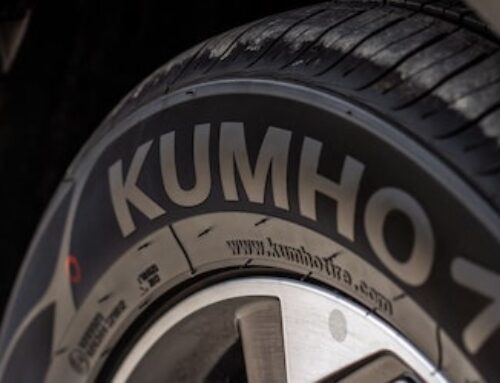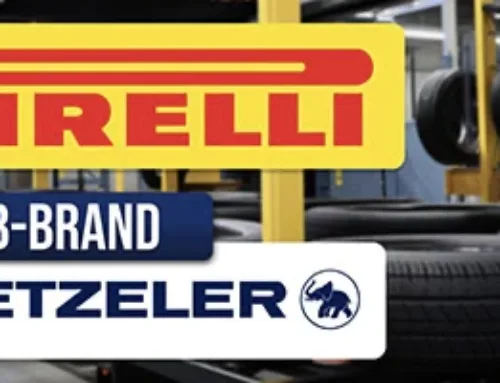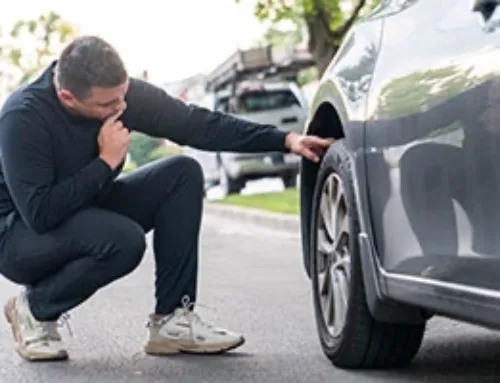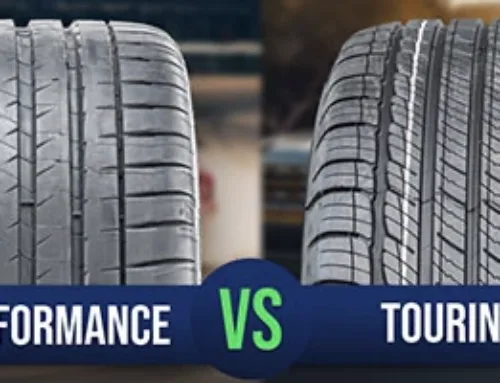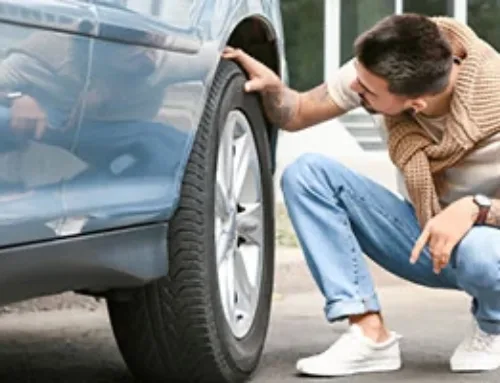Table of Contents
Our customers often ask us if they really need a tire alignment and what will happen if it’s not done. This article will answer all your key questions, including the most common: “How long does a tire alignment take?” Let’s explore the tire alignment basics.

Tire alignment basics
So you’ve started to notice some troubling signs, such as uneven tire wear or your steering wheel pulling to one side. These are all classic symptoms of misaligned wheels. If you’ve noticed one or more of these symptoms, it’s probably time to get your wheels aligned.
Typically this type of work can be done at your local auto repair shop in as little as 30 to 60 minutes, but there are several factors that can make the process longer and several things to look out for. Read on to discover what those factors are and learn what exactly a tire alignment means and how proper wheel alignment can affect your car’s performance.
What is tire alignment in the first place?
The simplest explanation is that you want your wheels to be straight and level (aka aligned), over time, even routine driving can result in misaligned wheels. Wheel misalignment is very common even for regular commuters who don’t push their cars too hard, so it’s important to get your tires checked regularly and to be on the look-out for some of the common symptoms of tire misalignment (more on that later) to maximize your vehicle’s performance.
Additionally, suppose your car has recently experienced some significant impact, such as hitting a pothole, driving into a curb, or even a minor accident. In that case, it’s possible this could have caused some alignment issues.
Check your car owner’s manual to see how often you should get your tire alignment checked, but a good general rule of thumb is to get your vehicle’s tire alignment checked at least once a year or every 6,000 miles (which would be every other oil change).

3 common types of wheel alignments
1. Toe-in and toe-out
If you look down at your feet, you might notice that your toes are pointed slightly inward or slightly outward. Now imagine you are looking down at your car from above and see if the wheels are pointed inward or outward in the same way. Usually, toe-in/out is a front-end alignment issue, but not always.
2. Camber
Sticking with the feet analogy, roll your foot so that most of your weight is on the outer or inner edge of your foot. This is known as positive or negative camber, respectively. Your vehicle’s tires can do the same thing, with most of the weight being on the inside or outside of the tires. Generally, you want a neutral or zero camber so that your tire is flush on the ground, but there are exceptions (more on that later).
3. Caster
While seated, place your foot flat on the ground (no camber, please). Put your knee directly above your ankle while maintaining flat contact with the ground, and try rotating your toes outward and inward (your feet represent your tires in this case). Now sit so that your knee is slightly in front of your ankle, and try to turn your toes inward and outward. Much harder, right? This is known as a negative caster. Now try sitting so that your knee is slightly behind your heel, and try to turn your toes. Much easier, right? This is known as a positive caster.
Don’t let the best tire deals & tips roll by!
Sign up for our newsletter
Actually, most modern cars are manufactured with a positive caster, a very slight negative camber, and a very slight toe-in alignment. But for most vehicles, these “misalignments” are actually done to improve handling and safety. In fact, you might have seen a racecar with an exaggerated negative camber; this is done for increased performance while cornering.
For the vast majority of vehicles, these “misalignments” are so slight that you would never notice while viewing with the naked eye, and they represent the correct way that your car’s wheel alignment should be.

Is a wheel alignment really necessary?
The short answer is yes. If your tires are misaligned, this can result in significant problems if left unchecked. So don’t ignore these easy-to-spot symptoms.
- Uneven tire wear: If your wheel alignment is off, this can result in some uneven tire wear on the tread of your tires. Positive or negative camber will result in the outside or inside of your tires becoming more worn than the opposite side. An excessive toe-in or toe-out alignment can result in choppy tread wear.
- Excessive tread wear can result in a blowout (where your tire explodes while driving) which can be extremely dangerous. If you have evenly worn tires, it could still mean that your alignment is off. Over time this will result in poor fuel economy, and you will have to purchase new tires sooner.
- Steering wheel pulling: If you find that your steering wheel is pulling to either side, this could be because of a wheel alignment issue. The steering wheel might pull excessively to one side, or it might pull a little bit to both sides.
- Steering wheel alignment: If your steering wheel alignment is off while attempting to drive straight, this could be a sign that your wheel alignment is off.
- Steering wheel shaking or vibrating: If your steering wheel is vibrating while you are driving over an otherwise smooth road, this could be from increased friction caused by wheels that are not straight.
- Difficulty while turning: If you have noticed that your vehicle is more difficult to turn in one direction than the other, this is typically a symptom of a tire alignment issue.

3 common types of tire alignments
1. Four-wheel alignment
This is when your local auto repair shop will use an alignment machine to check and re-align all four wheels. While most alignment issues occur in the front end, the rear end is not immune to alignment issues. Most mechanics agree that the four-wheel alignment is the gold standard of tire alignments and should be your first choice.
2. Two-wheel alignment
This type of wheel alignment process involves adjusting only two wheels (typically the front end) and ignores the other two wheels. Two-wheel alignments are naturally faster and cheaper than four-wheel alignments, but not by much. This is due to the fact that much of the time is spent setting up the precision alignment machines, getting the car onto the lift, etc.
3. “Toe ‘n Go” alignment
Amongst wheel alignments, this type of front-end alignment is generally considered a poor way to have your vehicle aligned. This is when a mechanic adjusts only the toe alignment of the front end and will not check for issues with the camber or caster.
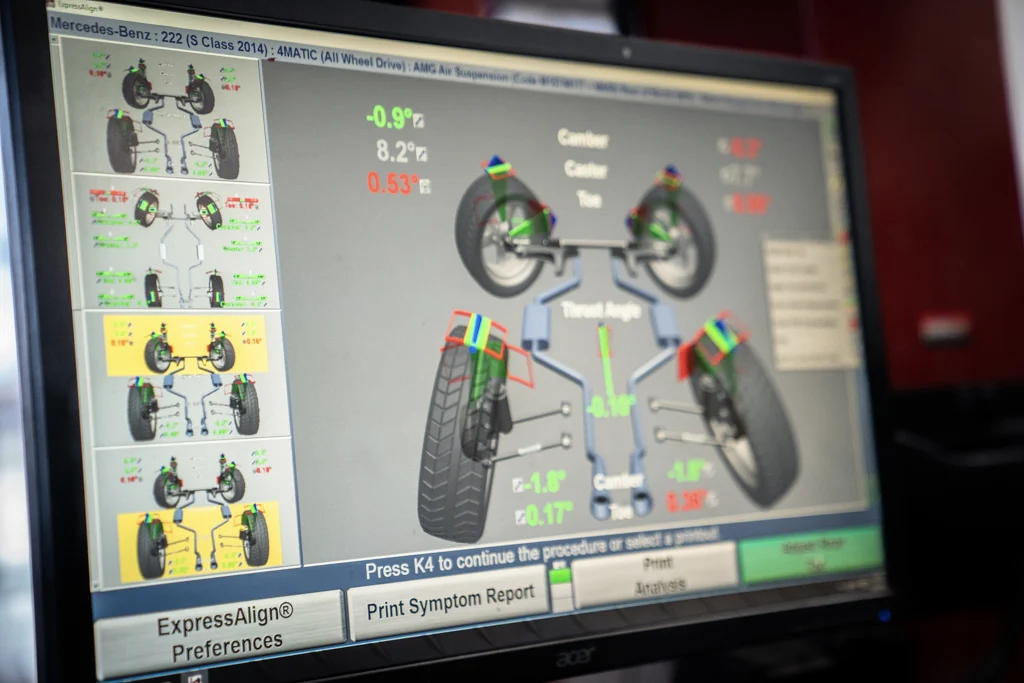
Choosing the right type of the alignment
Although a tire alignment is usually not time-consuming, several factors can make the job more difficult for your service center of choice.
Older vehicles tend to take longer, oftentimes over one hour. The age of a vehicle’s components is important because old or rusted parts are more difficult to work with and remove.
The type of vehicle you drive can also affect the length of time it takes to have your alignment performed. A smaller and simpler vehicle will have easier to reach and remove components.
The severity of your wheel alignment can also be a determining factor. Simply put, a slight adjustment takes less time than a major adjustment. This is another reason why having your wheel alignment checked regularly is important.
Choosing a four-wheel alignment over a two-wheel alignment will also be more time-consuming, but as previously mentioned, getting all four wheels checked is definitely the preferable option.

Is it OK to drive with tires out of alignment?
The short answer to this question is: no, not really. Although slightly misaligned wheels do not pose a major problem, your wheel alignment will only worsen if you continue to drive. Not getting your wheels aligned can lead to dangerous situations such as a blowout, poor condition of your tire treads, poor fuel economy, and difficulty handling your vehicle. So it’s important to get your wheels checked on a regular basis.
Frequently Asked Questions
Is it dangerous to drive my car if it needs an alignment?
Yes, it can be. If your misalignment is severe, this can result in a blowout which can cause an accident. Even if the misalignment is minor, this can result in difficulty handling your vehicle, particularly around turns and at high speeds. So yes, it can be dangerous to drive if your vehicle is in need of a wheel alignment.
How much does a tire alignment typically cost?
A typical four-wheel alignment usually costs between $100 and $200, but it could be more or less depending on the factors mentioned above. A front-end alignment or two-wheel alignment will be slightly cheaper.
How often should I have my car alignment checked?
Consult your owner’s manual for specific information about how often to check your alignment. However, many manuals don’t specify this information. Most certified technicians recommend having your alignment checked at least once a year or every 6,000 miles.


